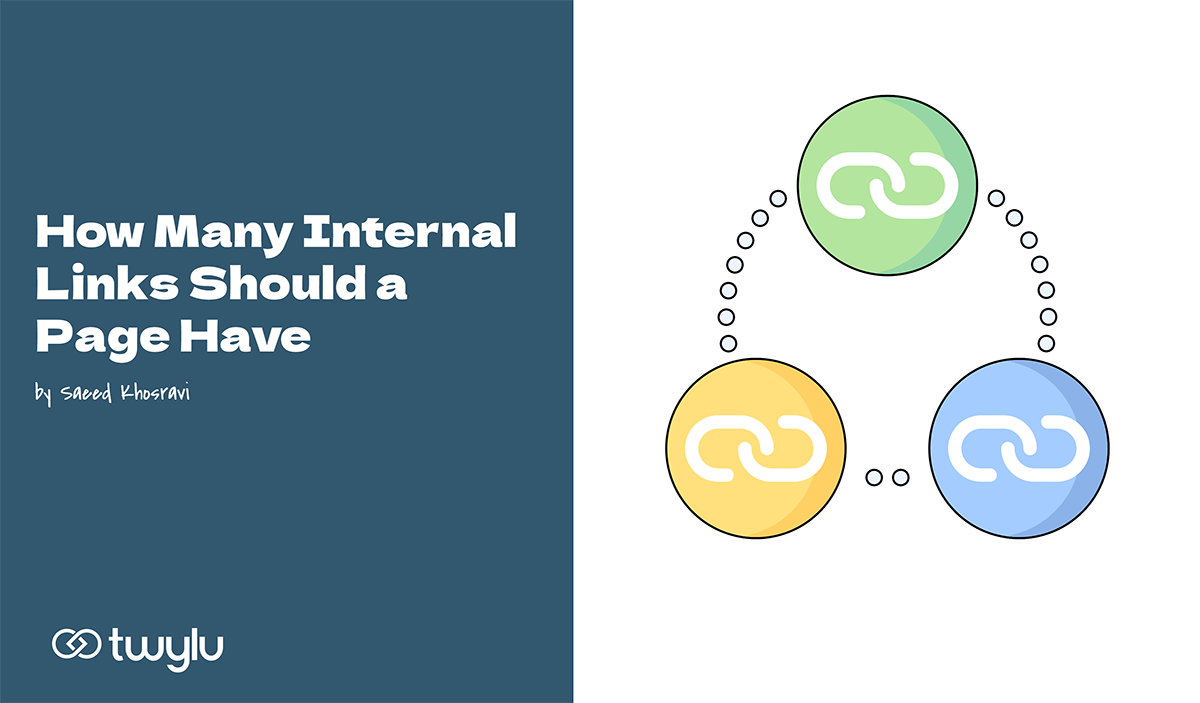How many internal links should you have per page? What’s the maximum number of links you can build internally from one page to the other pages of the site? These are very common questions in SEO, especially for those just starting to optimize their internal links.
I think that the correct question should be how many “contextual” internal links a page should have.
A page can have both navigational and contextual internal links, and navigational links are most often site-wide, meaning that every page on the website (new or old) will inherit the same navigational links (header and footer links.)
The correct answer would be that the recommended number of contextual internal links can vary mainly depending on:
- The length of the content of the page
- The intent that the page addresses
- How big the site is (number of pages the site has)
Number of internal links based on content length
As a rule of thumb, here at Twylu, we recommend a range of 3 to 15 contextual internal links per page. The lengthier the content, the more internal links you can naturally have.
- For a 500-word page or less, you might want to limit your number of internal links to below 3
- For 500 to 800 words pages, you might go for up to 5 internal links
- For 800 to 1500 words pages, you can get up to around 7 internal links
- For 1500 to 2500 words pages, you can easily go for around 10 to even 15 internal links
Number of internal links based on search intent
Regarding the search intent of the page and the number of internal links:
- Informational pages: If the page serves an informational intent, you can naturally have more contextual links as this will be in line with the informational nature of the page. The goal is to answer the specific question that the user has, and the user is naturally looking to obtain relevant and related information and will be willing to click on additional internal links to move on to the new pages with more information regarding their topic of interest.
- Transactional Pages: For the transactional intent, fewer internal links might be more advantageous as the user is in the buying phase, and we do not want to distract them with anything else.
- Commercial Pages: For pages that address the commercial investigation search intent, you might have a few internal links to relevant pages, like specific features, etc., but still, that would be less than the informational pages but more than transactional pages.
Number of internal links and website’s size
The bigger the site is (in terms of number of pages it has,) the more pages you will naturally have to link to, so for a site that has only 10 pages, you would naturally have fewer internal links than a site like Wikipedia, with millions of pages of content.
Keep in mind these best practices
In general, it’s more about the quality of the internal links, their relevance, their placement, their anchor text, and even their visual styles rather than their quantity.
Your page should not look like a link farm (avoid overlinking), and you should not have more than one link to the same destination page or link to two different destination pages with the same anchor text.
Try to have a mixture of branded and non-branded terms when creating internal links. Linking branded terms to your homepage and other brand-specific pages and the non-branded terms to your cornerstone pages (also known as pillar or focus pages.)
Another good practice is to space out your internal links throughout the text rather than having 4-5 links in one paragraph and then no links in the rest of the text.
Remember, it is always about the quality, not the quantity, and internal links are not any different.

